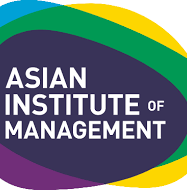CRADLE Projects
The CRADLE Program aims to enable technological advancement and innovation of local companies and to support the growth of the Philippine Innovation ecosystem. Through the program, the academe and/or RDI in partnership with a Filipino company, undertakes research and development to improve the company’s products, processes, and services to become more competitive in their respective industries. Beneficiary-companies under this program must provide at least 20% counterpart funding and commit to adopt the technology that will be developed. This way, research outputs from the academe are directly translated commercially to the market.
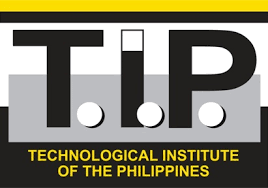

PCOPEIA Predictive Chromatography of Organic Plant Extracts with Intelligent Agents
Sambong is a traditional herbal tea and sold as non-therapeutic medicine capsule. The problem is it that the therapeutic application cannot be standardized because the phytochemical composition of Sambong extracts varies widely. The project will develop an artificial intelligent system that draws out information about the growth environment and extraction process producing specific composition. The system will help the partner company, Pascual Pharma Corporation, standardize the use of Sambong as therapeutic medicine.
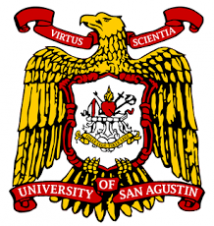
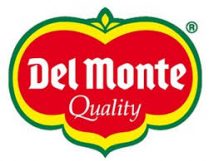
Metabolomics as Tool for the Discovery of Hypocholesterolemic Natural Products from Pineapple
The proposed project will utilize metabolomics to transform Del Monte Inc. waste plant parts (estimated volume: 1,000,000 MT per year) into valuable source of new or novel compounds. Theses new or novel compounds are high value commodities, i.e. they can serve as functional food ingredient and dietary supplements in foods and beverages that produce the desired health benefit. Considering that cardiovascular disease is a leading cause of morbidity and mortality in the Philippines, the discovery of compounds with cholesterol-lowering and lipase activity from pineapples will be a boon to the industry.
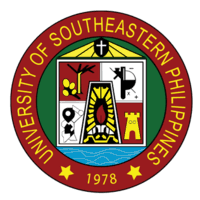
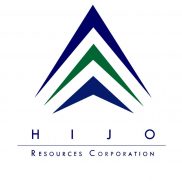
Synergize Academe-Industry Research Undertaking to Improve Productivity through Development of Banana Diseases Surveilance System
The project addresses the needs of HRC to lessen the frequent spraying of pesticides on theire entire banana plantation, costing millions of pesos each year. Recognizing the expertise of the university, HRC collaborated with USeP and successfully developed an innovative banana diseases surveillance system that will map the spread of diseases in the plantation. The developed system has reduced pesticide spraying without affecting the fruit quality, resulting in significant savings for HRC.
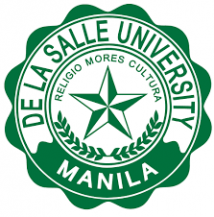
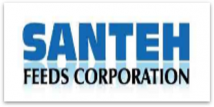
Development of a Cost-Competitive Aquafeed from Lab-lab
The project proposes to develop adequate harvesting and drying technologies in an effort to generate an ample supply of lab-lab biomass year-round, and preserve a portion of production for use in off-seasons when cultivation is deemed impossible. Since the appropriate technologies are not yet established, the output of the proposed undertaking will bear a positive impact in the aquaculture sector, especially if the total cost of production in terms of the cost required to grow the fish up to a certain body weight can be lessened; utilizing lab-lab as sole food for the fish or using it as primary ingredient of the formulated diet. The general objective of the study is to develop an effective methodology for producing low-cost aquafeeds from lab-lab biomass.
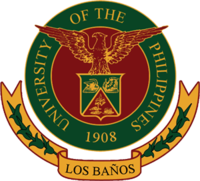

Reinventing Ice Cream into a Functional Food Matrix
The project proposes to develop a symbiotic (prebiotic + probiotic) ice cream using the fruits of earlier basic researches conducted in IFST-UPLB on pre and probiotics. Specifically, it aims to determine the anthocyanin content of Hinaligi flour; (2) evaluate the microbiological quality, physicochemical characteristics, proximate profile and sensory characteristics of the symbiotic ice cream treatments; (3) conduct consumer testing of the ice cream formulations, and check the viability of the probiotic culture during frozen storage of the symbiotic ice cream.
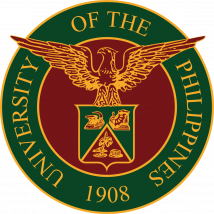
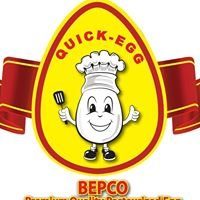
Development of Chicken Egg White Powder and Granules from Low Value Edible Shell Eggs
This project addresses the need of BEPCO to optimize use of their low value chicken eggs by producing instant dried chicken egg white powder and granules through the use of spray drying and aggiomeration technologies. the establishment of protocols on dried whole chicken egg white powder and granules entails the characterization of the raw materials which includes dirty and check, and soft shell eggs, optimization of spray drying process as well as aggiomeration technology characterization of the spray dried egg white powder and dried granulated eggs and conduct of the optimized powdered and granulated eggs to specific bakery and dressing products. The NCR food innovation facility , UPD Pilot food plant,innohub and the DOST Onelab will be utilized to carry out characterization of raw materials and optimized powdered and granulated products and the spray drying and aggiomeration process optimization.


PISOLAR: Payment Innovation for SHS Ownership by Lay Away Routine
The project will look into the development of a platform on real-time monitoring of SHS Health and usage along with a payment innovation for solar home system (SHS) component ownership through a lay away routing. The product will offer a series of prepaid payment mechanisms either through Short Messaging Service (SMS), Wireless Sensor Network (WSN) or Conditional Access Module (CAM). Through payments, the platform uses one of the chosen mechanisms to activate the SHS until the next installment is due. The device will also deactivate the system when the subsequent payment is not made. After pre-determined schedule of payments is complete, the PISOLAR is unlocked and subsequent payments will be lesser than the previous. These payments will be used for the operation and maintenance, battery replacement and system upgrading. PISOLAR will be using cloud-based software system for digitation of payments and real-time monitoring of SHS health and usage.

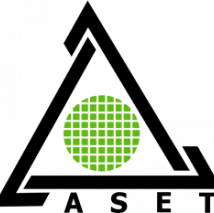
Enhancement and Market Validation of Plasma Enhanced Chemical Vapor Deposition Industrial Prototype for Nitride Based Coating
A coating technology system developed at the Plasma Physics Laboratory of the National Institute of Physics offers an alternative to carbide coating. The technological innovation, in one broad sense, demonstrates that titanium nitride (TiN) can be synthesized on industrial tools such as drill bits, taps, punchers and extrusion molds using a locally developed magnetized sheet plasma source. The project was supported by the DOST-TECHNICOM with a total grant of Php 9.8M for more than two years of implementation. It involved the design of the scaled-up system sheet plasma device, procurement of necessary equipment and components, and test runs to determine stable operating conditions for thin film deposition. The project partnered with Asian Semiconductor Electronics Technologies Corporation (ASET Corp.) to realize adaptation of the technology for industrial applications. Although the TECHNICOM proposal lasted only for a short term, the benefit gained by ASET Corp. through the partnership was enough to establish their name in the semiconductor EMS and metal-working companies in the Philippines. Owing to the initial success of the partnership, ASET Corp. reaffirms its commitment to the partnership in the development of the hard coatings technology especially on TiN thin films using the sheet plasma device. The University of the Philippines-Diliman together with ASET Corp. seeks to continue this partnership through this proposed project.
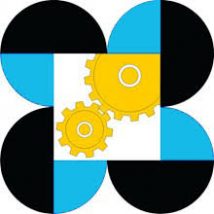

Post-Treatment of Food Processing Wastewater Effluent for Nutrient Removal
This project aims to design and develop a post – wastewater treatment system for the further removal of nitrogen (ammonia nitrogen and nitrates) and phosphorous (phosphates) in the existing wastewater treatment effluent of target industrial establishment in order to comply with the latest effluent standards of DENR.
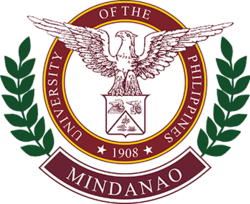

Fermentation and Purification Research to Produce Food Grade, Pharmaceutical-Grade and Polymer Grade Lactic Acid
Production of various grades of lactic acid through the fermentation of Sago (Metroxylon sagu rottb.) using a strain of microorganism discovered in the Philippines. The general objective of the Project is to conduct purification studies to produce at least 80% food-grade lactic acid, pharmaceutical grade lactic acid, and ultimately 99% polymer-grade lactic acid from fermentation broth. Specifically, it aims to: 1. produce, repair, and calibrate process equipment, instruments, and utility systems for the purification laboratory; 2. set-up a dedicated state-of-the-art research laboratory for lactic acid biorefining studies; 3. conduct downstream purification studies to further increase the purity grade of lactic acid from the current 50% technical grade to at least 80% food-grade leading towards, pharmaceutical grade and polymer grade lactic acid; and 4. conduct process evaluation and techno-economic analysis of UP Mindanao’s lactic technology at a laboratory scale.


Micropropagation of selected genetically-verified, superior bamboo to protect the environment and develop an alternative wood industry
To make available planting materials through micropropagation of selected, genetically-verified commercial species of bamboo for use in replanting programs to protect he environment and for bamboo plantation establishment to meet the requirements of industries that need good quality bamboo poles as raw materials. Make available planting materials through micropropagation of selected, genetically-verified commercial species of bamboo for use in replanting programs, specifically 1) To select mother plant for tissue culture of three commercially important species of bamboo: kawayan tinik, Giant Bamboo, and Bolo 2) To generate DNA barcodes and genetic structure of superior mother plants of the three selected bamboo species for tissue culture 3) To generate tissue culture protocols for the three selected bamboo species, and 4) To assist the private sector in adopting the tissue culture protocol for genetically-verified mother plants and in enhancing the field survival of tissue cultured planting materials.


Development of a Design Guideline Using Finite Element Analysis (FEA) for Semiconductor Packages
The general objective of the project is to develop a semiconductor packaging design guideline using thermomechanical analysis. Specifically, the projects aims (1) To develop the baseline model of the semiconductor package case study, (2) To conduct thermomechanical validation study based on previous/existing studies, (3) To setup the boundary condition of the case study; and (4) To develop the design guidelines based on the analysis of the results.
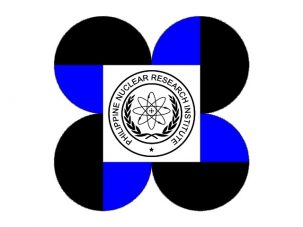

Development of Novel Radiopharmaceuticals for Management and Detection of Early Stage Prostate Cancer
To develop 99mTc/188Re peptide-based molecular probe candidates for early-stage prostate cancer at the end of this project


ZURFACE: Surface Modification of Natural Zeolite for the Adsorption of Textile Dye Waste
In the proposed research study, the PNZ will be functionalized with surfactants to enhanced its absorption with cationic, anionic and organic dyes. Functionalization techniques will be optimized for economical production of the SMNZ. Characterization of the PNZ and SMNZ will be conducted to evaluate the enhanced property of SMNZ. Absorption isotherms and kinetic studies on the SMNZ absorption of dye from textile wastewater will be conducted and evaluated. At the end of the research study a product, Zurface SMNZ, may be offered to the textile and dyestuff manufacturing companies for the remediation of its wastewater before discharge to effluents.
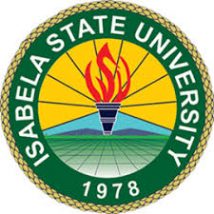
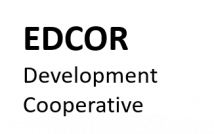
Demeter’s Eye: An Embedded System for Detection and Mapping of Witchbroom’s Disease on Cassava
The general objective of this project to design, develop, implement, and evaluate the Demeter’s Eyes based on embedded systems that can detect, recognize and map infected cassava plants using new technological image acquisition techniques. Design, develop, establish, and implement an embedded system for smart detection, recognition, and mapping of Cassava Phytoplasma Disease (CPD) using Aerial Unmanned Vehicle (AUV) and deep learning technology.
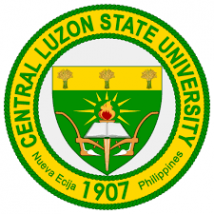

Development of Decontaminating Machine of Rice Hull as Litter Floor for Broiler Breeder Production
Generally, broilers are reared on litter floor and a good quality litter is very important in broiler production. There are different types of litter materials used by poultry raisers. Some of these are sawdust, rice hull, rice straw, sand, con cobs and sugarcane bagasse. Many studies have been conducted particularly on the comparison of growth performance of broilers as affected by different litter materials. Rice hull as identified as one of the best litter materials for broilers in terms of growth performance and feed conversion.
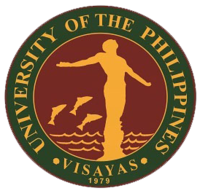

Protein Hydrolysates from Marine Fisheries Species
The project is proposing a hypothesis that sick people (or those with impaired immune system); should have their body functions and metabolism focus and divert most of its energy, in addressing and repairing what is wrong with the body. Given the opportunity, the human body could heal and repair itself. In line with this thought, the body should not spend so much energy in the process of digestion. This could be done by the provision of simple, easy to digest foods of complete nutrition, in the form of peptides.
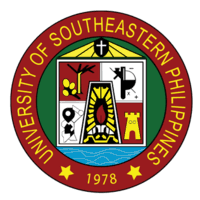

Development and Pilot Testing of Tree Climbing-Harvesting and Mobile Mechanical Dehusker for Coconut
The project provides a specific solution to the coconut industries engaged in harvesting and dehusking operations. Two project outputs will be developed (1) modified coconut tree climbing device (2) mobile coconut dehusker. The general objective of the project is to develop and pilot-test the tree climbing-harvester device and mobile mechanical dehusker for coconut.
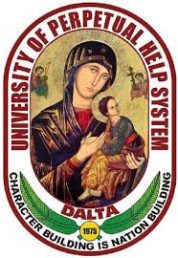

Development of a System that Can Determine and Classify the Layout Correctness of Integrated Circuit Layout Blocks using Machine Learning.
The project is aimed at developing a system wherein layout of blocks can be analyzed for correctness and acceptability using machine learning algorithms. This is helpful in evaluating the performance of students or trainees who are taking courses that are being offered by CAMP.
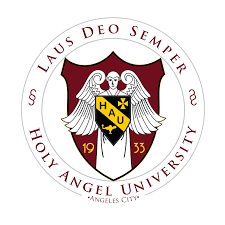
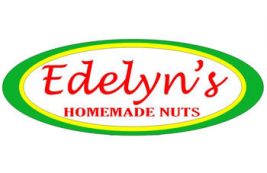
Design and Development of a Mechanical Garlic and Cashew Chipper
This project proposes a slicer machine that could eliminate manual slicing and at the same time increase production. Workers would be hazard free and companies that uses garlic as their raw materials would increase profit by being able to produce more of their products, thus lessening the opportunity losses brought about by not being able to cope up with the customer demands. With the initial interview conducted to four (4) companies, slicing of raw materials is one of the basic techniques needed in preparation for garlic-based and cashew based products and it is one of the techniques that manufacturers are having difficulty with. Manufacturers are interested with the machine since they believe it will increase their processing however they do have reservations thinking that it would be too costly for them to purchase it. Garlic or cashew slicers available in the market are still manual while some machines does not give the output within their required specifications. Searching on the internet for commercially available slicers would show different kitchen aides and machines having a different price ranges. Thus, for small and medium scale manufacturers to afford such a machine, the researchers will aim to design and develop a low cost machine slicer that can meet the manufacturers’ requirements at a competitive cost. This project aims to address the need of the industry of further improving their production processes, from doing it manually to the use of a machine.
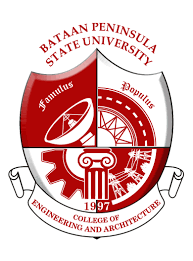
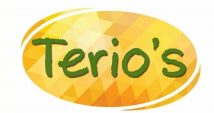
Development of De-oiling Equipment for Deep Fried Peanuts and Garlic
The De-Oiler machine functions as an oil-remover of fried peanuts and garlic chips, while maintaining the quality of the product such as the crispiness, crunchiness, avoid rancid taste and prolonging of shelf-life. This project helps to fasten the production compared to the manual process by the use of centrifuge principle and heat application. Also, the system of this machine is automated thus, it lessens the human intervention and eventually, reduces production time. The machine is also easy to operate. Due to the faster production, the manufacturing company will increase the quantity of their usual daily quota of finished product.

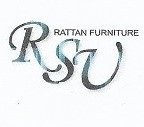
Development of Wastewater Treatment Equipment for Wet-Type Finishing Spray Booth
The current wastewater disposal practice is either discharge within the local drainage system or direct disposal to bodies of water. This can contribute to environmental pollution as the wastewater contains toxic chemicals from finishing overspray. To resolve this, development of wastewater characteristics, the optimal treatment method suitable for FSBW and the volume of one unit of FSB, among others.
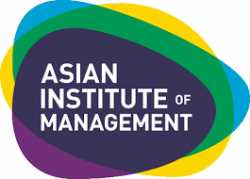

Enhanced Forecasting Model for Complex Water Supply Systems of the East Service Area of Metro Manila
Currently, 92% of MWCI’s water supply comes from the Angat Dam and with the remaining 8% from the combination of the new Cardona Treatment Plant and the rehabilitated Deep Wells. With the bulk of the supply still coming from Angat Dam, the stability of water supply of the East Zone is largely dependent on how MWCI maximizes its 40% share of the MWSS releases from Angat and keeping the La Mesa Dam levels high enough to supply water to Balara Treatment Plant and East La Mesa Treatment Plants. This proposal aims to develop (1) A forecasting model for the water supply level of Angat Dam, (2) A forecasting model for water supply level of Ipo Dam, (3) A forecasting model for water supply level of La Mesa Dam, (4) A forecasting model for water supply to Manila Water treatment plants, and (5) Ultimately, optimal water supply distribution in the East Zone due to robust forecast of water flow to MWC treatment plants.


Non-intrusive Sensor-based Prescriptive Maintenance Platform for Wire Manufacturing Factory (IISA – Integrated Intelligent Sensors and Actuators)
In this R&D project, a networked system for implementing prescriptive maintenance using image processing, sensors, and machine learning shall be developed for a Wiring Manufacturing Factory. The objectives of the project are to: (1) design, develop, implement and deploy at least three sensor-based or machine-vision based solutions to monitor the identified root causes of machine defects, (2) deploy a network system and monitoring servers to manage all the data from the sensors, (3) design, develop, implement and deploy an artificial intelligence that will perform prescriptive maintenance and corrective action plan based on the sensor data, and (4) perform simulation on the systems to measure its reliability.

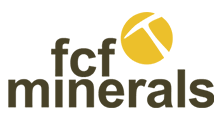
Runruno (PCIEERD funded, CRADLE tagged)
CRADLE tagged but PCIEERD funded
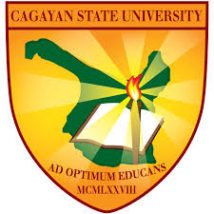

Development of Efficient Semiochemical Management Method for Banana Flower Thrips
The project will develop a semiochemical-baited traps to control the flower thrips (Thrips hawaiiensis (Morgan)) in the cavendish banana plantation of TADECO in Panabo. From 2011 to 2018, losses due to thrips feeding and ovipositing damage (brown scab and water soaked appearance) on banana fingers averaged at 12% of the total bunches harvested and this roughly amounted to Php 1.2 Billion in a 6,608.67 ha. of TADECO. One of the environment-friendly pest management methods of insect pests is the manipulation of adult insect behavior using semiochemicals functioning as signal compounds. Semiochemicals are bioactive compounds emitted by an individual and produce a response in another individual by the same species.


Design and Prototyping of Salt Harvesting Equipment
To improve productivity and efficiency of solar salt processing in deep crystallizer salterns, design and prototyping of a first ever locally fabricated salt machine is being proposed. The proposed prototype will mechanize the process shortening the harvest period from months into only a few days, By doing such, a higher quantity and quality of salt can be produced in a shorter amount of time addressing the issues on impurities contamination and product losses. The technology can be adopted by other solar salt producers providing opportunities not only to the local salt industry but to the local fabrication industry as well. In order to fulfill these objectives, this project study was proposed.

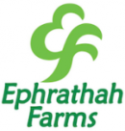
Management of Unified Control and Automated System for Smarter Hydroponics Greenhouse
This project intends to design, develop, and implement a smart management system for greenhouse production of lettuce. The system will address the intensive and laborious task of monitoring and controlling plant nutrient in an NFT hydroponics system and other issues in inefficient monitoring techniques as presently experienced by Ephrathah Farms. The proposed system will design and create a tow-cost control and management system employing the technology of internet of things (I0T). The project will design and create a management and control system employing multiple sensors, automated nutrients dosing, control and monitor of temperature of the nutrient solution, and test the reliability of the system.


Reworking of Processed Meat Using a Combined Acidification-Heat Treatment Process
Developing a convenient, shelf-stable, value-added product would eliminate the problems identified by the Tacloban City Litson Indusrty Association (TACLIYA) and at the same time increasing their product lines as well as their income. Aside from its longer shelf life, it can be distributed as a disaster food, considering that the Eastern Visayas is a disaster prone area, with its expedient packaging and can be displayed well with an engaging label. Other ‘Lechon’ producers in the country can also adapt this technology and benchmark this research towards economic growth. This project generally aims to reprocess or rework the unsold processed meat from lechon producers of Tacloban City into convenient, shelf-stable acdified-thermally processed ‘Lechon Paksiw’.Specifically, it aims to: (1) characterize the frozen unsold lechon as raw material; (2) conduct variable screening to determine the three significant components at specified levels in producing Lechon Paksiw necessary for the optimization process; (3) optimize the 0 formulation and process of the products from screened variables, (4) verify the sensory acceptability of the optimum formulations; (5) assess the consumer reaction towards the formulated products; (6) perform and evaluate the physio-chemical properties, microbial load, and sensory evaluation on every phases of the experiment to enforce and assess the quality of the product; and (7) subject the optimum product to the following parameters: a) Shelf-life Testing; b) Nutritional Value Determination, c) Thermal Validation Test (Heat Distribution and Heat Penetration Tests) and d) Commercial Sterility Test.
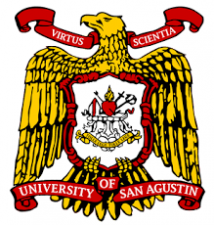

Standardized and Safe Tawa-tawa: Filling in the Final Gaps for a Clinically-proven Nutraceutical Product
A local plant believed to have curative potential and is widely used for the treatment of dengue-induced thrombocytopenia is Tawa-tawa (Euphorbia hirta Linn). This indigenous plant is claimed to have a medicinal effects on dengue patients and became one of the most popular “folkloric medicine” in the Philippines administered to increase the platelet count of dengue patients, mostly for those who are not admitted in hospitals. Thrombocytopenia, a deficiency in platelets (thrombocytes) that increases the risk of bleeding, is a clinical symptom of dengue infection. Several studies revealed the potential of tawa-tawa to increase platelet counts in thrombocytopenic disorders but the definitive identification of active constituents aside from the commonly known polyphenols is an area that requires further understanding. Despite folkloric and traditional medicine use of Tawa Tawa in the Philippines to increase blood platelet count, coupled with an array of scientific reports on its anti-dengue and antithrombocytopenic potential, the country is left begging for standardized commercially available Tawa Tawa herbal preparation.


Valorization of Mature Coconut Water through Beverage Development
The proposed study is an effort in reducing food loss by valorization of mature coconut water which is commonly considered as waste by the coconut industry both locally or internationally. The study aims to develop ready-to-drink beverages from mature coconut water complemented with healthy and refreshing additives such as but not limited to ginger and turmeric.
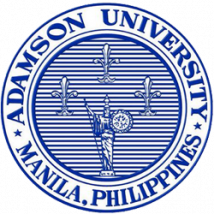
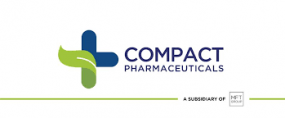
Formulation, Quality Control and Immediate-Release Tablets of Fixed-Dose Combinations of Aspirin and Cilostazol
Cilostazol and aspirin are two drugs used for the management of stroke, thrombo-embolic disorders and ischemic heart disease but are available as separate dosage units in the market. Up to date, no fixed-dose combination (FDC) of cilostazol and aspirin exists in the Philippine drug market. Compounding and optimizing immediate-release (IR) tablets containing FDCs of cilostazol and aspirin is not only cost- efficient, but will provide patients suffering from the aforementioned disease safe, compatible, stable and effective generic medications that are cheaper than the counterpart innovator products of each drug available as separate tablet formulation. The optimized FDC formulation is also expected to minimized adverse drug reactions, reduce anticipated medications errors associated with dispensing and enhance dosage compliance. This project seeks to formulate safe, effective and cost-efficient immediate-release tablet formulations of fixed-dose combinations of cilostazol and aspirin.
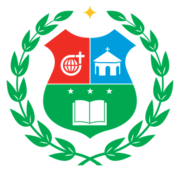
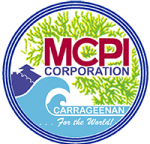
CARRAGEEN RESEARCH & DEVELOPMENT LAB (CR&De-L): Developing Cold-Soluble Powders, Bioplastic Sheets, and Bioactive Hydrogels from Nano-Structured Carrageenans
In this project, we will create the Carrageenan Research and Development Lab (CR&De-L) to develop three product lines-Cold-soluble Powders, Bioplastic Sheets, and Bioactive Hydrogels using nano-structured carrageenans.
Here, we will continue to partner with the MCPI corporation, Cebu, to develop new lines of applications for their existing product lines based on semi-refined and refined kappa- and iota-carrageenan powders. The carrageenan powders will be utilized in its current form, or further purified for lab scale analysis and development. The targeted applications will range from developing soluble powder at ambient conditions, paper and bioplastic sheets, gelation additive (for food or non-food products), and gels with bioactive characteristics for 3D printable artificial tissue scaffolds/additives. We will have expert advice from existing academic collaborators from Prof. Shingo Matsukawa of the Tokyo University of Marine Science and Technology (TUMSAT), Japan and Prof. Jenneke Klein-Nulend of the Vrije Universiteit Amsterdam (VUA), the the Netherlands. The collaboration with TUMSAT will continue for further expert advice on carrageenan purification and chemical characterization. And the collaboration with the Vrije Universiteit Amsterdam (VUA, The Netherlands) will provide expert advice on exploring possible bioactive characteristics of carrageenan preparations from locally grown and harvested red seaweeds by the MCPI corporation. My research team at the Medical Biophysics Group, provides the appropriate cost-effective venue for lab scale preparation, macro-level and micro-level rheological characterization of crude and semi-refined carrageenans, adapting the methods developed in my previous projects, BINARY GELS (2017-2019), and COILS, CELLS, & GELS (2013-2015). USC and its Department of Physics, shall further provide the proper administrative support for this intended academe-industry partnership to develop scientifically-characterized prototypes.
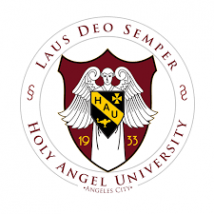

Integration of Machine Learning Inference on Home Energy Storage System (HESS) to Deliver Long-term Optimized Self-Consumption with Low Probability of Power Loss
We underscore the anomaly between the performance and financial aspect (techno-economic model) of existing solutions in the local market today has led to very low bankability of residential PV energy systems. Bankability or the likelihood that any technology will be funded relates to its quality, reliability and ability to deliver long-term profitability. The bankability barrier coupled with much weaker purchasing power of most Filipinos in the face of lacking regulatory and financial support is discerned as a key challenge towards commodification of PV energy systems to become regular household appliances. Techno Philippines Innovation Corporation and Edge-Systems Engineering Services jointly seek to foster collaboration with Holy Angel University to address the industry challenge from the vantage points of science and engineering by developing a bankable Home Energy Storage System (HESS). At the core of HESS is a uniquely clever Energy Management System (EMS) that runs machine-learning inference. The cost-effectiveness and profitability of such system is crucial to promoting grid-independence and market adoption. Thus, in order for it to be diffused widely for residential or small business use, it must be designed in order to achieve not only lower investment cost but also lower levelized cost of electricity. Lower LCOE can be achieved with a longer system’s lifetime and a larger share of self-consumption that relies on the ratio between energy generation and consumption curve and the timely overlap of both. The process involves probabilistic estimation of highly-variable solar irradiation values affecting energy production and highly-dynamic consumption behavior. Artificial intelligence (AI) can be utilized to explore such variation in data, understand the underlying patterns and make cost-saving inferences. With advances in computer and software technologies present an opportunity to embed machine learning capabilities on HESS at a fraction of the cost.

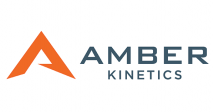
Integrated Flywheel Energy Management
Amber Kinetics Philippines is an energy storage company that capitalizes on advanced flywheel technology providing competitively priced, safe and environmentally responsible multi-hour kinetic energy storage systems. The company envision to accelerate the global adaptation of energy storage systems by commercializing advanced and cost-disruptive flywheel technology to provide a lower cost and higher performing alternative to fossil fuel generation.
Flywheel systems convert and store electrical energy in a rotating mass taking the advantage of unlimited daily cycling capability, high round-trip efficiency, zero capacity degradation and chemical reaction as compared to storage batteries.
Amber’s core technology breakthrough is a low-cost, highly scalable rotor of functionally optimized material and construction. This construction allows for multi-cycling capability and ability to provide full power over the full stage of charge (SoC) range.
De La Salle University, with the Science and Technology Complex in its Laguna Campus, made an industry-academe collaboration with Amber Kinetics in 2019. Part of this collaboration is the commissioning of 1MW / 4MWh designed for 125 M32 flywheel energy storage systems installed within the vicinity of the campus. This project aims to help the university decrease its electricity cost through reduced peak demand charges. In addition, this partnership will also establish a research and development center that will further enhance flywheel technologies in the Philippines. Initially, Amber Kinetics provided four (4) proprietary flywheel energy storage units to kickstart adapting the company’s technology for a more efficient and economical utilization of electricity within the campus.
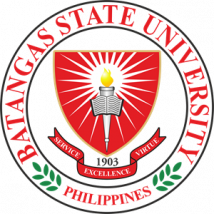

Development of a Liner-Enhanced Curing Vessel for Salted Egg Production for Eggciting Traditions
The Company’s rapid curing method required a suitable process vessel that can be hermetically sealed, the vessel having an internal makeup that can withstand close to permanent brine immersion while exposed to high and vacuum pressure cycles. There are recent innovations in the process, among which required further exposure of the inner vessel surface to additional aggressive substances.
The company’s existing pressure vessel design has a rectangular dimension with a maximum capacity of 16,320 pieces of eggs per production cycle. The rectangular configuration is preferred because of space efficiency, optimized mass transfer (less dead space), and less volume of effective solution required. The flat walls also made the application of protective liner less complicated. The process vessel is made of mild steel and lined with vinyl ester to protect the surface from the corrosive action of the brine solution.
Linings are barrier applications used to protect a substrate from corrosion by harsh chemicals. Linings properly selected, installed in a properly designed and prepared substrate, and maintained, will provide long years of satisfactory service. For example, glassflake liners have proven track record in many environments, including saltwater, where service lives of correctly formulated materials in excess of 25 years are not uncommon. Developments in technology are allowing these coatings a service life longer than 30 years under aggressive service applications. Chemflake is one example of proprietary glassflake coating recommended for operations requiring continuous immersion in brine solution.


Production of Dietary Fiber using Sugarcane Bagasse from Raw Sugar Manufacturing
Sugarcane bagasse is the primary agricultural waste from sugarcane industries in the Philippines. Bagasse has been used as an industrial material for several applications in textile, cosmetics and paper manufacturing but still imposing a problem in the environment due to continues accumulation that are not utilized. This research could potentially address this problem by means of developing a novel application of these wastes. The study will produce a dietary fiber from sugarcane bagasse and come up with a cost effective production process. Dietary fiber is very important for human diet that provides numerous physiological benefits at the same time. In addition, development of sugarcane bagasse dietary fiber as an intermediate product could be used for functional food formulations or preparations with high market value.
The project activities will involve baseline data gathering, visit to raw sugar manufacturing/processors. Sugarcane bagasse samples will be collected and characterized. Development of pre-treatment and production process will be developed at ITDI. Results will be translated to actual raw sugar processing set-up.
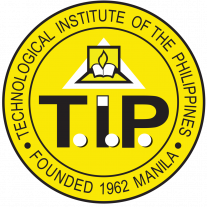
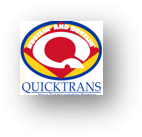
DRIVER. PH- Drivers Roadworthiness Improvement Verification Education & Readiness for the Philippine logistics industry
DRIVER.PH is is composed of two parts which both assess and evaluate truck drivers’ competence and skill.
The first part of the system is composed of online learning/educational modules, mobile learning applications, and gamified applications which educate the drivers and evaluate the person’s preparedness to drive a truck on the road.
The second part of the system evaluates the drivers’ behavior on the road. Trucks will be equipped with an IoT device to gather real-time data such as location, speed, acceleration, etc. These data will be sent to the cloud server to be processed by an AI system which will evaluate the presence of traffic violation on the driver’s actions. These information will be stored and analyzed for patterns to come up with a scientific evaluation of the drivers’ competence on the road using data analytics.
The project basically targets to minimize road accidents caused by trucks which often lead to destruction of property and loss of lives. After the conduct of various testing, Quicktrans Cargo Moving, Inc. will be adopting the technology.
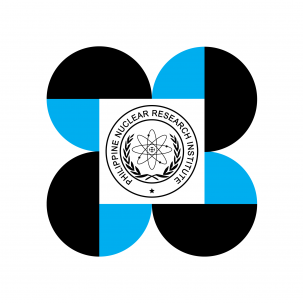
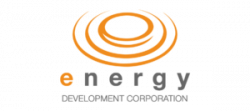
Development of a Gamma Computed Tomography Imaging Device for Industrial Applications (GAIA) Project
Geothermal energy is one of the major sources of renewable energy for a country like the Philippines which is located along the Ring of Fire zone in the Pacific. The International Renewable Energy Agency (IRENA) estimates the Philippines’ net installed geothermal energy capacity to at 1.9 gigawatts (GW)—ranking second behind the United States (2.5 GW). The Philippines currently has 9 installed geothermal power plants generating ~8% of the country’s power mix. The utilization of geothermal energy comes with some technical challenges related to the chemistry of the geothermal fluids which sometimes contain quite considerable concentrations of minerals and gases, which can cause scaling and corrosion in wells, pipes and surface installations which the geothermal fluids flow through. The formation of scales on equipment surfaces exposed to geothermal fluids can have serious economic consequences to the power plant arising out of energy losses, increased capital cost from equipment oversizing, increased pumping costs, increased cost of cleaning and maintenance, loss of production, or even abandoning a production or reinjection well due to clogging. It is therefore imperative of the geothermal power plant to have an available technique to directly assess the degree of scaling in their systems before such serious economic losses occur. A technique that is currently available and used by the non-destructive testing (NDT) industry for industrial plants is gamma scanning. However, the result of such technique is limited such that you only have a 1D absorption/density plot and thus the interpretation of such 1D profile cannot de directly translated to how thick the scales are. We propose here an imaging technique that uses the concept of computed tomography coupled with a gamma-ray source (gamma-CT) for assessing the degree of scaling in geothermal system pipes and surface installations.
This project aims to build a prototype of a gamma-CT imaging equipment that is portable enough to be carried in field/on-site measurements and with 3D visualization capabilities that will be pilot-tested by the Energy Development Corporation for assessing pipe scales in their geothermal sites.
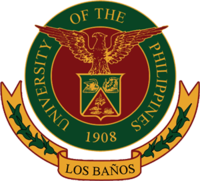

Application of Natural Antioxidants Derived from Sugarcane for Food, Food Supplement and Cosmetics Production Formulations
It aims to characterize and profile the bioactive compound present in sugarcane extract produced by patented process technology bein used by Forever Nutriliving Corp and to utilize it in food, food supplement and personal care product.


Development of a Design Guideline Using Finite Element Analysis (FEA) for Semiconductor and Electronics Packaging Systems for Automotive Applications – FEA Phase 2 (Automotive Applications)
The project aims to continue in aiding the semiconductor and electronics industry through the help of numerical calculations in Finite Element Analysis and providing adequate training for the members involved to be able to perform simulations and technical evaluations for the results in the design of semiconductor packages. The project would work closely with the partner industry company while the main base of operations would be in the Thermomechanical Analysis Laboratory (TALa) situated at the DLSU Laguna Campus where it is within a proximity from IMI. The project research activities involves the following. The review of related literature on the thermomechanical analysis of the semiconductor package under study. Material characterization and database management of properties obtained for design options and simulation purposes. Development of the computation model of the semiconductor package through geometry creation, meshing and boundary condition setup. Technical trainings on advanced FEA techniques from experts. Research publications from the studies conducted. Finally, a collaboration report on the project with the industry partner.

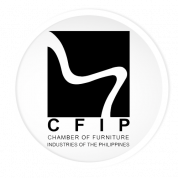
Development of Plasma Coating Processes for the Furniture Industry
This project proposes to develop coating technologies and associated processes and tools to coat the surfaces of furniture products made of different materials. This project will closely collaborate with the CFIP and some of its members. The Philippine furniture industry aims to be the global design innovator or hub for products using sustainable materials by 2030 according to the Department of Trade and Industry. To be technologically ready for the global market, the availability of advanced and cost-effective technologies, machineries/equipment, and production processes are necessary. To remain competitive, the furniture industry must continue to become less dependent on foreign technologies. Instead, the industry must rely on locally-available technologies to remain relevant and competitive. Among the potential technologies that can be made available domestically are coating technologies. According to the Chamber of Furniture Industries of the Philippines (CFIP), the ability to coat furniture and its components would give them the flexibility, faster turn-around time, ability to customize their products, and eventually lower the costs. A local coating facility or a tool that caters to their coating needs would give the industry the leverage to be sustainable.
The general objective of the project is to develop different plasma-based processes for the coating furniture parts and components.


Pilot Testing of Packaging Technology Developed For Frozen Durian Using Locally Produced Packaging Materials
The proposed project will determine the performance of locally produced high barrier films and will also validate the results generated from the previous study conducted by the Packaging Technology Division (PTD) of ITDI. Also, it aims to keep the freshness (exotic aroma and flavor) of durian, extend the shelf life up to one (1) year, prevent migration of aroma to other frozen products, and expand the existing market of frozen durian.
General Objective: To pilot test the packaging technology developed for frozen durian using locally-produced packaging materials.
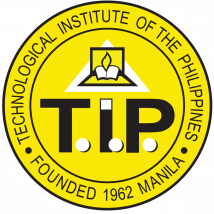

Smart Parcel Locker
The project aims to develop smart parcel locker (can receive and keep) targeting local delivery/logistics companies. Implementation and efficient utilization of parcel lockers requires the support of residents in a city or location, courier/delivery companies and the owners of places such as condominiums where parcel lockers are located. Therefore, this enables us to receive shipments at a convenient time, often while doing other things, such as shopping or refueling the car. Additionally, local authorities must be involved in the stage of implementation with regards to the permission and the selection of sites.

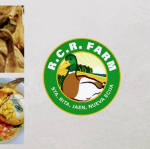
Enhancement of housing management and breeding program in multiplier farm of Itik Pinas in Central Luzon
With the benefit of raising ItikPINAS, a number of producers/sellers have emerged claiming to have ducks as good as IP, which they called Itik Pinoy. It is necessary therefore that the purity of IP be protected and conserved thru the establishment of certified IP multiplier farms that will cater the needs of the industry.
One of the private duck farmers who participated in the implementation of the ITIK for LIFE program is Mr. Rene Ramos, owner of the RCR Egg Dealer and Balut Industry in Zaragoza, Nueva Ecija. He acknowledged the improved performance of IP in terms of productivity and egg quality and realized its advantages over the traditional Pateros ducks. He is currently using IP in his farm and is also selling day-old and ready-to-lay IP pullets to other duck egg producers. However, his current farm facilities and designs are not compliant to the layout and structures that are required of a duck breeding farm to ensure the purity and quality of the stocks that will be produced. Thus, facilities enhancement is necessary.
Moreover, with the increasing demand for high quality duck eggs especially the IP-Kayumanggi, he needs to establish a sound breeding plan and renovate his layer duck houses to allow implementation of recommended breeding and selection practices to ensure a sustainable supply of high quality ItikPINAS in Central Luzon and other duck egg producing regions.
This project aims to ensure a sustainable supply of IP lines in Central Luzon and other duck producing regions. Specifically, the project aims to:
– Improve the practices, structures and layout of RCR Farm thru implementation of better housing, recording and breeding and selection protocols; and
– Capacitate farm personnel on proper recording system, and breeding and selection protocols for IP purelines production

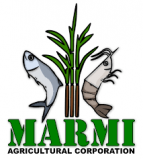
Biofloc-based Nursery Tank Production of Shrimp for Quality and Sustainable Supply of Aquaculture Products in Urban Areas
The recent COVID-19 pandemic resulted in a slowdown in the economy, which in turn exacerbated existing food insecurity by limiting the ability of the population to have access to nutritious food in various ways, including reduced income or increased job insecurity. While the food production sector (including aquaculture) should in principle be less affected than others, illness-related labour shortages, transport interruptions, quarantine measures limiting access to markets and supply chain disruptions resulting in food loss and waste could affect food supply. To address these problems on food insecurity and employment cuts in the aquaculture sector during a health crisis, there is a need to reinforce operational procedures by redesigning existing technologies to ensure production efficiency. Hence, this proposed project aims to develop a biofloc technology (BFT) protocol for the tank-based nursery production of whiteleg shrimp, Litopenaeus vannamei.
It aims to develop a biofloc technology (BFT) protocol for improved growth and survival of white leg shrimp, Penaeus vannamei, during tank-based nursery production and ensure a stable supply of aquatic products for food and as source of export. Specific objectives are:
- To optimize the use biofloc technology in tank-based nursery systems for white leg shrimp.
- To determine the various physico-chemical and biological water quality parameters in a biofloc-based nursery tanks for white leg shrimp.


Development of Low Temperature Dryer (LTD) for Specialty Coffee in Nueva Vizcaya
The project aims to develop a low temperature dryer (LTD) in order to produce specialty-grade Arabica coffee that could be sold at higher price. Talbec, Dupax del Sur is geographically located within the Casecnan Protected Landscape in the mountainous areas of the Caraballo and Southern Sierra Madre mountain ranges having elevations of 1,000 masl and above resulting to a cool and humid climate suitable for Arabica coffee production which is one of the major livelihoods of the Bugkalots having an existing Arabica coffee plantation of about 100,000 coffee trees. The Bugkalot Coffee Growers MPC (BCGMPC) with more than 300 members has an existing 30,000 Arabica coffee trees and envisioning to produce Specialty Coffee (excellent aroma), however, their existing drying practices such as sun drying (only possible during summer), use of fuelwood-fired closed and open mechanical dryer (pugon) and fluorescent chick brooder all operating above 30oC, reduced the quality in terms of diminished aroma and presence of molds resulting to discoloration of supposedly green coffee beans (GCB). Based on prior drying experiences in drying washed coffee, the BCGMPC observed problems on the quality of the dried coffee products such as brown colored coffee bean instead of green, reduced aroma and with foul odor. Their produce was only marketed locally or bought by the Indigenous Peoples Coffee, Inc. (IPC) as exchange-grade at P300/kg.
Drying coffee could either be done at high or low temperature. Existing techniques that involve high temperature include sun drying/solar, forced convection mechanical drying. Low temperature drying is expected to enhance the quality of dried green coffee beans (GCB) from exchange-grade priced at P300/kg to specialty-grade priced at P1,000/kg. Hence, this project.
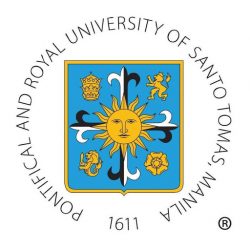

Development and Quality of Soysage using Okara
The primary goal of the project is develop a meat analog sausage product made from okara flour, evaluate its quality and determine its effect on lipid profile and blood glucose in vivo animal.


Extension of Shelf Life of Rice Meal in Microwaveable Container
To establish an extended shelf life of at least 2 weeks of most marketable rice meal in microwaveable top seal tray of Jolliant. Jolliant supplies rice meal to 7/11 stores.
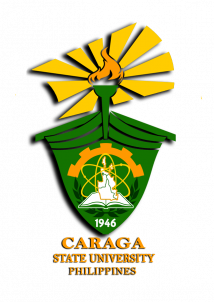

Systematized Mining Operations using Automation and Real-Time Telematics Platform towards a Paradigm Shift in Surface Mines of Caraga Region (SMART Mines)
This project aims to develop a systematized approach in monitoring and analyzing the operations of surface mines in Caraga Region using automation and telematics platforms. Specifically, the project will (1) Provide tools for fast and real-time data gathering on daily tasks in mine operation using Arduino based system, RFID, android device application, (2) Design and develop a web-based application to display real-time graphical information, reporting, and analytics based on the acquired data from Arduino-based system and Android device application providing the following dashboard module features:
a. Analytics of the overall mine hauling equipment efficiency;
b. Real-time display of summary and reports of mine productivity;
c. Ore blending optimization and scheduling; and
d. Real-time mine equipment tracking visualization.
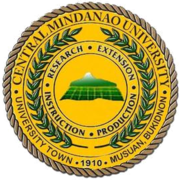

SMART MINE: Development of Sediment Monitoring and Analysis for Rehabilitation Tool in a surface MINE area
This proposed project makes use of the actual measurement of erosion within a specific site where the control measure is implemented. The total erosion amount for a particular slope of the mined out areas shall be determined using the Water Erosion Prediction Project (WEPP) model (Flanagan, 1995). Simulation approach is widely accepted because it is almost impossible to directly evaluate the amount of soil loss in every piece of land under all varying conditions (Laflen et al., 2004). An information management system for the integrated geospatial and app based intelligent management tool will then be set up using a server which will serve as data storage facility of processed data. The information management system will support in retrieving, accessing and updating the needed information of any part of the mine out area and allow the user to navigate through different levels of details according to need. More importantly, the system will support data analysis with regards to the current situation of system and simulation/modeling studies in assessing the sustainability and efficiency of site specific erosion control and rehabilitation plan of the selected mined out areas.


Upgrading the Philippine Lateritic Bauxite Through Potential Ore Beneficiation Processes
The project aims to develop a beneficiation method that will upgrade the Philippine bauxite ore. It was conceptualized in cooperation with Marcventures Holdings Inc. with the aim of developing a method that can reduce the silica content of the bauxite ore found in various ore deposits in Leyte. The project will explore existing beneficiation methods and its applicability with the Philippine bauxite ores mined by Marcventures Holdings Inc. and testing results will be discussed with them at least once a month. To test the viability of the product, the upgraded bauxite ore will be tested using a laboratory-scale Bayer process. After testing, a pilot-scale design will be recommended along with initial economic analysis. The developed beneficiation process will then be recommended to be adopted by Marcventures Holdings Inc. in upgrading their bauxite ore. The results of this project would aid the economic growth and mineral processing technology of the country, as well as increase the global competitiveness of the country in mineral processing.


Mine Tailings Utilization for Socioeconomic and Environmental Sustainability
Mine Tailings Utilization for Socioeconomic and Environmental Sustainability is a project aimed at developing alternative solution to the waste of gold processing plant which is the mill tailings. This tailings are currently stored in Tailings Storage Facilities (TSF) in the plant and usually left unutilized. The amount of tailings generated is substantially large as it is estimated that around 1000kg of wastes are generated for every 10g of gold. Maintenance of TSF usually raises concerns since it can fail and there have been many cases in the past wherein the failure of TSF resulted to pollution of nearby ecosystem and even fatalities to communities. In this study, a comprehensive characterization of the mill tailings will be conducted in order to provide the industry partner with appropriate or suitable method of remediation to decrease the harm caused by the tailings. Physical and chemical characteristic of the tailings will also be conducted to identify possible technologies and develop separation processes that would convert the valuable materials in the waste to usable products. Production of bricks, pots, garden statue, and other products are also to be made using the solid component of the tailings. Lastly, a feasibility study to evaluate the system wide contribution of the proposed technologies adopting Circular Economy and Industrial Symbiosis is to be conducted.


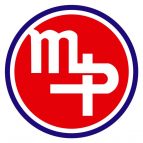

Drive Air ni Juan-Aluminosilicate Technology for Compact Air Purification
The Drive Air ni Juan Project will develop to build a powerful yet portable air purifier for automotive air filtration systems which works as a particulate filter, harmful gas remover, and anti-microbial filter. The project shall utilize naturally occurring aluminosilicate minerals in the Philippines through facile modification processes to mitigate the health-related risks of using taxis as mode of transportation. With this new technology and product proposed, we can provide these essential products to our transportation sector without relying on the importation of raw materials by supporting our local communities that are rich with aluminosilicate materials especially those areas of past volcanic activities such as Pangasinan, Albay, Pampanga, Zambales and Taal.


baTID: RFID-band for Personalized Body Temperature Monitoring
SparkSoft Solutions, Inc. is a software solutions company providing services and products related to various applications on mobile, web, network and database management, and embedded systems. Some of the company’s product offerings include: Survey+-an Android-based real-time survey system with time and location information and SmartAssist—an assistance monitoring system using smart ID cards. One of the products envisioned by the company is a smart system for the new normal. During the COVID19 pandemic—in the new normal—people will be required to submit to body temperature check at entryways daily. Hence, this project will develop a wireless RFID temperature patch with integrated identification, system alert, and data management system with analytics which will be a smarter solution to body temperature screening in many establishments such as school campuses and workplaces.


Community-level Functionalization of Handwoven Cordillera and Mindoro Textiles for Creative Protective Clothing
The project seeks to develop safe, breathable, and affordable non-medical face masks using local hand-weaving communities’ distinctive patterns of indigenous fabrics. Research interventions on fabric construction and smart finishing water repellent finishing technology for community u-based set-up will be established. The project starts immediately with the weaving of various indigenous designs from the communities in Cordillera and Mindoro in coordination with NTFP-EP. Fabric patterns and construction will be correlated with the filter efficiency of the developed fabric. This project also pilots and validates SmarTex solutions to render locally made handwoven textile materials functional while ensuring reusability. Commercially available yarns with cotton content of more than 50% will be used in this project. The CMMC will engage in communities in Cordillera and Mindoro to produce the indigenous textile weaves. PTRI will provide enabling technologies specifically the water-repellent finishing technology that will consider the community-based weaving community capability. The project’s scale also validates local community capacity, textile constructions, and specifications towards the desired barrier and durability performance.


CYANanobot: Miniaturized Boat-assisted Data Acquisition for Automated Cyanide Monitoring in Wastewater using Optical Nano-sensor
This proposed project will address the mining industry’s immediate need to conduct an online, real-time, and high throughput cyanide monitoring amidst the current health crisis due to the COVID-19 pandemic. In this new normal situation, face-to-face interaction among workers in the mining industry is highly discouraged, and as much as possible, it will be minimized. Hence, this proposed project will enable the mining industry to continuously perform its operation while minimizing personal contact among workers. This proposed study can also help the mining industry attain its target even in the time of pandemic without compromising the expected target/market flow of the mining industry. The proposed project’s general goal is to assemble an automated system using a nanotechnology-enabled module “CYANanobot Sensor” for a remotely controlled, automated detection and monitoring of cyanide in mining wastewater.
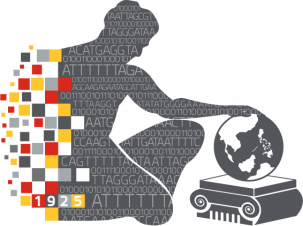
Technology Intervention to Provide an Alternative Market for Sampaguita (Jasminum sambac) as Raw Material for Jasmine Oil Production
SECURA International Corporation (SECURA)Js involved in the large-scale farming of Napier grass for renewable energy production and in pursuing sustainable agriculture through the development of high-value products, particularly essential oils to provide more income to farmers’ cooperatives. Operating several years ago from its experimental farm and laboratory in Gingoog, Misamis Oriental, the company did lab scale production of essential oils including menthol from Mentha arvensis and behenic oil from the seeds of malunggay (Moringa oleifera). The General Objective of the project is to assist SECURA by setting up a supercritical fluid extraction facility and optimizing parameters for SFE of Jasminum sambac to jumpstart the production of high-quality jasmine absolute as a means to enter the European market for essential oils. Specifically, it aism to (1) To set up a supercritical fluid extraction system for extraction of essential oils, (2) To optimize conditions for extraction of jasmine oil (jasmine absolute) in collaboration with Secura and pilot the facility for jasmine oil production; and (3) To ensure high quality raw materials by providing sampaguita farmers with training in integrated farm and pest management.


Developing cultivation systems for Ulva species in the Philippines
The present proposal intends to optimize and develop aquaculture dietary feed from Philippine Ulva meal. This product (feed additive) will be optimized to improve growth, feed efficiency and breeding performance of shrimp, tilapia and milkfish cultured in the Philippines. Also this proposal will also develop a semi purified Ulvan, a bioactive sulphated GAG’s from Ulva seaweed. This product will increase the market value of the seaweed for use in aquatic veterinary use to improve fish health and growth performance and feed efficiency of cultured aquatic species. This proposal is in response to the need of the Eco Life company that is involved in mass production and processing of Ulva meal for the local and export market.
Specific objectives are:
1. Develop Ulvan-rich (semi-purified) polysaccharide as immune enhancing feed additive for aquaculture use.
2. Formulate Ulva meal dietary supplement to enhance growth performance and breeding activity of Tilapia, Milkfish and Shrimp, using Eco Life G1.
3. Produce a prebiotic biomass from Ulva meal to enhance gut health and improve nutrient absorption and utilization.


Internet of Tubig (IOT): Development of Smart Water Meter Wireless Network
This project proposes significant improvements to the current system by designing, prototyping, and in-situ pilot testing a wireless water meter network and its corresponding network management software, collectively referred to as a wireless water meter management system (WWMMS). Efficient remote meter management, consumer profiling, leak detection, and real-time data collection can be achieved by using advanced metering infrastructure technology. With the current COVID-19 pandemic, the proposed system also enables contactless transactions and cashless payments, which are considered as crucial elements in flattening the curve.

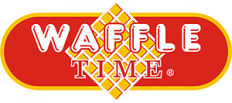
Valorization of Carabao’s Milk
This proposal aims to develop shelf stable, nutritious and locally sourced spray-dried carabao’s milk. The process to be optimized and intermediate products to be developed is tailored especially for the need of Waffle Time Group of Companies – a reputable and nationally known food kiosk and franchising industry. Waffle time is currently eyeing for dairy carabao industry development, recognizing the regional potential of Visayas.



Moringa oleifera-based developed (MOD) Nutraceutical Product: Nutritional and Metabolome Profiling
This project offers unique contributions through (1) the increased competitiveness of the Philippine Moringa-based product with sustainable production from local farming; (2) production of high-quality standardized Moringa spray-dried leaves as an ingredient; and (3) catalysis of the combined efforts of the agricultural, food production, and health sectors in designing effective interventions for Filipinos using products from Moringa oleifera. This study will also be a significant contribution to address the need for “impactful, and socially and culturally mindful programs and policies” (FNRI, 2019) as a solution to the persistent problem of under- and over- nutrition and its co-morbidities in the Philippines.


Diachronic Representation and Linguistic Study of Filipino Word Senses Across Social and Digital Media Contexts
Through this project, the DLSU proponents will work with Senti researchers to build rich language resources for Filipino and Philippine English. A dictionary that contains rich semantic information, like the new Filipino WordNet proposed in this research, is an important resource for Senti Al’s language-related APIs and services. The dictionary’s semantic information dictates the correctness of theinterpretation of words in a source text that is being processed. The new Filipino WordNet should be continuously updated and managed as word usage and meaning quickly and dynamically evolve within and across domains, media, and platforms. DLSU proponents will work with Senti to devise a pipeline to detect new words and novel senses of a word, as well as to develop a novel modeling framework that can improve the performance of Senti’s NLP API, through the addition of context-aware temporal representations of words in the new Filipino WordNet, which could help improve its capabilities in performing various NLP tasks, such as sentiment analysis, language identification, topic identification, intent classification, and word-level translation. Such NLP tasks are core features of their products, and the innovation in and maturity of their solutions will positively impact the services they offer to their clients.


Site Characterization and Implementation of Innovative Sustainable Oyster (SCI2SOS)
This project proposes to address sustainable supply of oysters using a through a science-based study and leveraging multilateral partnership among the Higher Educational Institution(UP-MSI), Research and Development/Government Institution (BFAR-NBFTC), an industry partner (ASIN, Inc.) and the guidance and assistance of a community-based partner NGO (Tambuyog Development Center).


ChicIoT: An IoT-Based Smart Poultry Building Environment and Growth and Health Status Monitoring and Modelling
Environmental quality inside poultry facilities is essential as unfavorable conditions may cause production losses and impair bird growth and health, in extreme situations, increase bird morbidity and/or mortality. Another big challenge in the poultry farms is to identify the early stage of disease and avoid to spread the disease to another. Hence, it is necessary to look for solutions that allow the monitoring of these variables in a practical, reliable and cheap way.
In the agribusiness, the scenario for the Wireless Sensor Networks is very promising, because it has emerged to fill this gap and deliver sensed data, widely increasing the connectivity of the devices. Thus, this project lead by USeP in collaboration with Tetra Consulting Company (TCC) will design and develop of ChicIoT: An IoT-based Environmental Monitoring and Disease Surveillance System with data analytics of a poultry building located in San Rosario, Bgy. Mahayahay Rosario, Agusan del Sur. The poultry building is owned by Agro-Industrial Development Corporation (AIDC) under the management of TCC.
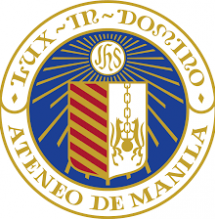

Building Bonds between Academe and Industry: Formulation of Vitrified Bonding Materials for Locally Manufactured Aluminum Oxide and Silicon Carbide Grinding Wheels
Recognizing the need to reduce GICA Grinding Wheel Corporation’s reliance on foreign suppliers and to support the local manufacturing industry further, the proponent intends to develop bond materials from locally available natural resources.


SPARCS: System for Plasma-assisted Ablation of Residues and Cleaning of Surfaces
The project will develop a dry-based cleaning system for the food manufacturing industry, specifically for Pilipinas Oro de Cacao, Inc. (FODC). An atmospheric pressure plasma system will be locally designed and assembled in close collaboration with a partner industry. The purpose of the plasma system is to remove residues on a surface as well as sterilize the surface after cleaning. This system could improve the food industry’s productivity and reduce operating expenses by using a fast and efficient plasma cleaning technology that does not use expensive wet-based chemicals. At the same time, the system may contribute to the reduction of wastes generated during the cleaning process. The system is expected to produce nontoxic by-products which is beneficial to the user as well as to the environment. The System for Plasma-assisted Ablation of Residues and Cleaning
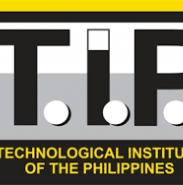

Constructed Wetland for Wastewater Treatment of Effluent from a Water Provider
The issuance of the Water Quality Guidelines and General Effluent Standards of 2016 (DENR Administrative Order No. 2016 series 08) requires businesses engaged in water supply and distribution to meet the parameters specified in the guidelines. The usual three stages of treatment including a sewage treatment facility are no longer enough to lower pollutants according to the new standards. To fully comply with DAO 2016-08, the main challenge for Subicwater is the further reduction of the following pollutants: COD, BOD, heavy metals, ammonia, nitrates, and phosphates, from the effluents of their wastewater treatment facility.
Constructed wetlands or Reed Bed Technology has been available as an inexpensive treatment for wastewater treatment needing further reduction in nitrates and phosphates. The research study includes soil matrix selection to best sustain the growth of the vegetation and enhanced with grease and oil skimmer as effluents from the water treatment facility indicated the presence of oil and grease that may affect the growth of plants.
The synergistic effects of the Reed Bed system, the oil and grease remover, the vortex technology and all essential and critical elements involved (such as plants, soil, climate…) will be the focus of the study. Evaluation of water tests results will be done vis-a-vis the identified parameters to validate the remediation effectivity of the various technologies and how relevant those are to capacitate Subicwater and similar industries to comply with General Effluent Standards (GES) 2016.


Sustainable Bangus Fry Production of ALT Hatchery, Panabo City Davao del Norte
The ALT Hatchery and Aquaventures, in Panabo CIty aims to achieve higher production in succeeding years as it plans to increase the number of bangus broodstock and improve its technical capabilities through the assistance of DOST-PCAARRD and UPV. Existing infrastructure are already established with a capacity to produce of up to 5-10 million bangus fry per year. The company desires to improve its existing capabilities on bangus hatchery management to generate more jobs and sustain the bangus grow-out and fingerlings production in the Province. Hence, this project lead by UPV aims to improve and sustain the milkfish fry production of ALT Hatchery in Panabo City, Davao del Norte. Specifically, it will 1) secure additional milkfish broodstock, improve broodstock management and increase egg production, 2) provide substitutes for live algae in rotifer production and 3) improve fry quality and increase fry production.


i-DRIP (IoT-Based Dispenser for Real-time Intelligent Pour) an IoT-Based Real-Time Control and Monitoring System for Smart Beverage Dispenser
The general objective of the study is to set-up an IoT-Based beverage dispensing and monitoring system initially deployed for products manufactured by Purenectar Company in #27 Rizal Avenue Extension, Grace Park, Caloocan City to help them switch from single-use throwaway bottles to refillable.
Specific Objectives: Develop forecasting models for product demand, and customer behavior, and validate supply management systems for better decision making.•Develop a network of sensors and electronic devices with IoT capability to enable multi-device communication, remote monitoring, and sustainable operation.•Evaluate the system in terms of precision, accuracy, and reliability.•Develop a mobile/web application that will provide a management and information dissemination platform for individuals i.e. beverage distributor, company manager, driver, and dispenser handler to gather/submit and visualize essential information.•Design and develop practical S&T adoption models that will work for successful technology transfer of the system.•Evaluate and validate the environmental impact on using the system.


Black Soldier Fly (BSF) Farming for Agricultural Productivity and Waste Management
Chesed, a local farm in Liloan, Cebu, supplies quail eggs and 25-day old pullets in the Visayas and Mindanao since 2015. To meet the growing market demand for quail eggs and pullets in the region, Chesed envisions expanding its quail production and exploring new markets. However, the expansion comes with a host of issues. The most pressing of which is waste management, which is also a common problem in surrounding and nearby farms in the area. Currently, the company composts an average of 3 sacks (approx. 150 kg) of quail manure daily. Conventional composting of manure takes 8-12 months, depending on the weather. The use of the Black soldier fly (BSF), Hermetia illucens L., an emerging green technology, represents an enormous potential in waste management. BSF can remarkably reduce a wide variety of wastes and concurrently offer valuable animal or human feed and oil with high nutrient composition. This project aims to refine the BSF technology in Chesed for sustainable biowaste conversion and transformation to valuable products (biofertilizer, prepupae feeds, and antimicrobial compounds). Hence, the project will not only address the current waste problem but will also provide potential additional income to the company, such as organic compost, and prepupae feeds.


Maritime Energy Demand Information and Analysis Software (MEDIAnS)
The Maritime Energy Demand Information and Analysis Software or Project MEDIAnS aims to create a centralized databases for parameters required for the estimation of maritime energy demand. The databases will house data for maritime transportation activity, domestic shipping fleet characteristics, ship operating phase characteristics, individual ship fuel economy, and route characteristics among others. This project is a collaboration of University of the Philippines Diliman (UPD) and SeaShore Transport Supplies and Services (SeaShore).


73. Nanotexturing of Stainless Steel 316L by Electrochemical Etching for Biological Implants
Arthrologics Inc., is a company that conceptualized, designed and developed Logic 1.0, a Total Knee Arthroplasty (TKA) implant intended to replace diseased knees on patients suffering from pain and debilitation from osteoarthritis and rheumatoid arthritis. The Philippine Journal of Orthopaedics published a research study proving that bacterial adherence in stainless steel implants can cause peri-implant infection within two weeks. Worldwide post surgical metal implant related infections (3-5%) are not common but nonetheless one of the most devastating postoperative complications. This biofilm mode of bacterial growth on metal implant surfaces protects organisms from the host immune system and antibiotic therapy, and scientific research is abundant on this matter. The development of a unique nano texturing surface modification technology to the leading product of the company, Logic 1.0 knee implants in order to prevent bacterial adhesions and further lower infection to less than its reported 2% infection rate; and as a platform for differentiation versus other implants in the market.


Development of Nanofertilizer from Poultry Waste Biogas Digestate
The project is a research collaboration between the University of Mindanao and Ana’s Breeders Farm, Inc. (ABFI). ABFI is one of the leading integrated poultry farm producers of high-quality broiler chicken meat in the Philippines. Their scope of operation includes feed mill plant, parent stock farms, hatchery, broiler farms, dressing plant, cold storage facility, and meat processing plant. One of the problems the company is facing is the salability of their fertilizer from chicken manure due to the undesired odor and moisture possessed by the produced fertilizer. Hence, the project aims to produce a nanofertilizer which is considered a promising approach to improve crop production, thus, making it more attractive in the market. The project will alos develop a technology to deodorize the produced nanofertilizer to increase its salability.


Use of Fish Oral Vaccine in Tilapia Aquaculture System
The project is a research collaboration between the Trinity University of Asia and Santeh Feeds Corporation. In this project, the tilapia microbial pathogen (Aeromonas sp. “Disease -Fish- Rizal*” (DFR, local isolate) will be mass produced and applied as a fish oral vaccine against bacterial infection which causes serious mortality and economic losses in tilapia farms. The product will be used in the Santeh feeds production plant. The feeds with the oral vaccine will be deployed for field trials in aquaculture farms in Central Luzon and CALABARZON that showed high tilapia mortaility on bacterial infection. The application of fish oral vaccine in tilapia aquaculture will help in the development of fish feeds industry sector, mitigating fish disease and in the improvement of tilapia production.

QARE-HHC: Quicker Analytics for ResponsivE Home Health Care
The project aims to create a reference EMR data schema that will render medical data ready for predictive analytics initiatives and provide a best practices basis for the formulation of frameworks to regulate the local HHC sector. Proponents also envision developing an end-to-end platform for automating the intake, harmonization and processing of medical data, and predictive models using Artificial Intielligence to extract insights from the data and optimize the scheduling of HHC activities such as house visits and teleconsulting sessions. Through these, the project aims to aid Qavalo’s digital transformation through streamlining and automation of its opertions to enhance competitiveness, and also help both the development of the local HHC sector and the democratization of access to quality and affordable home healthcare to Filipinos through PhilHealth.

